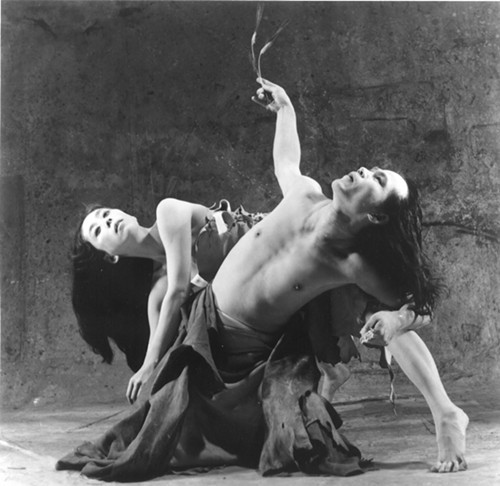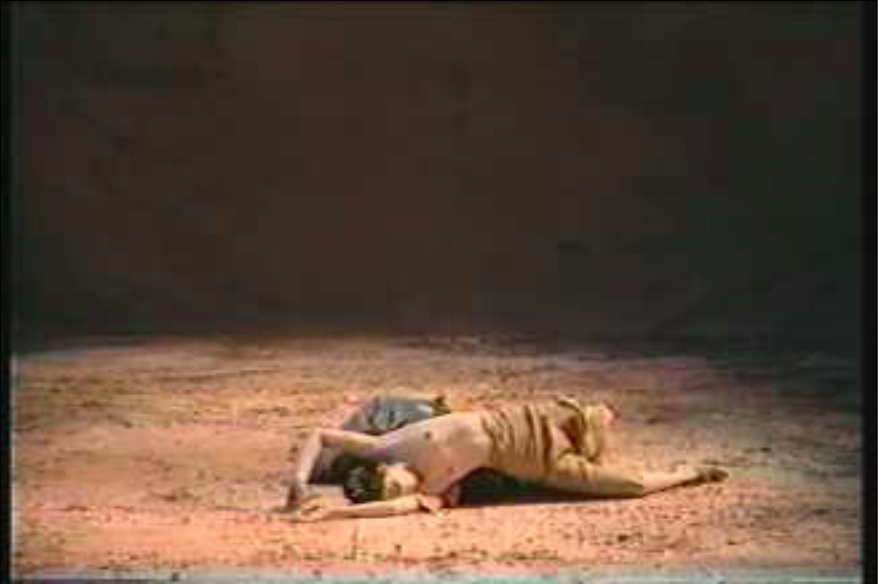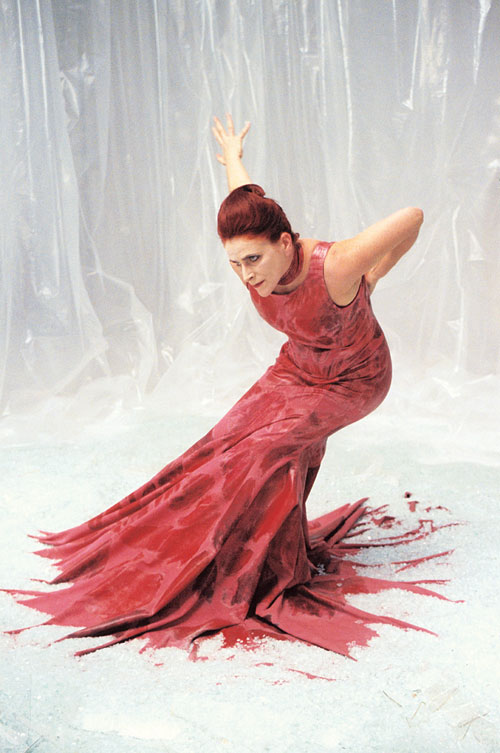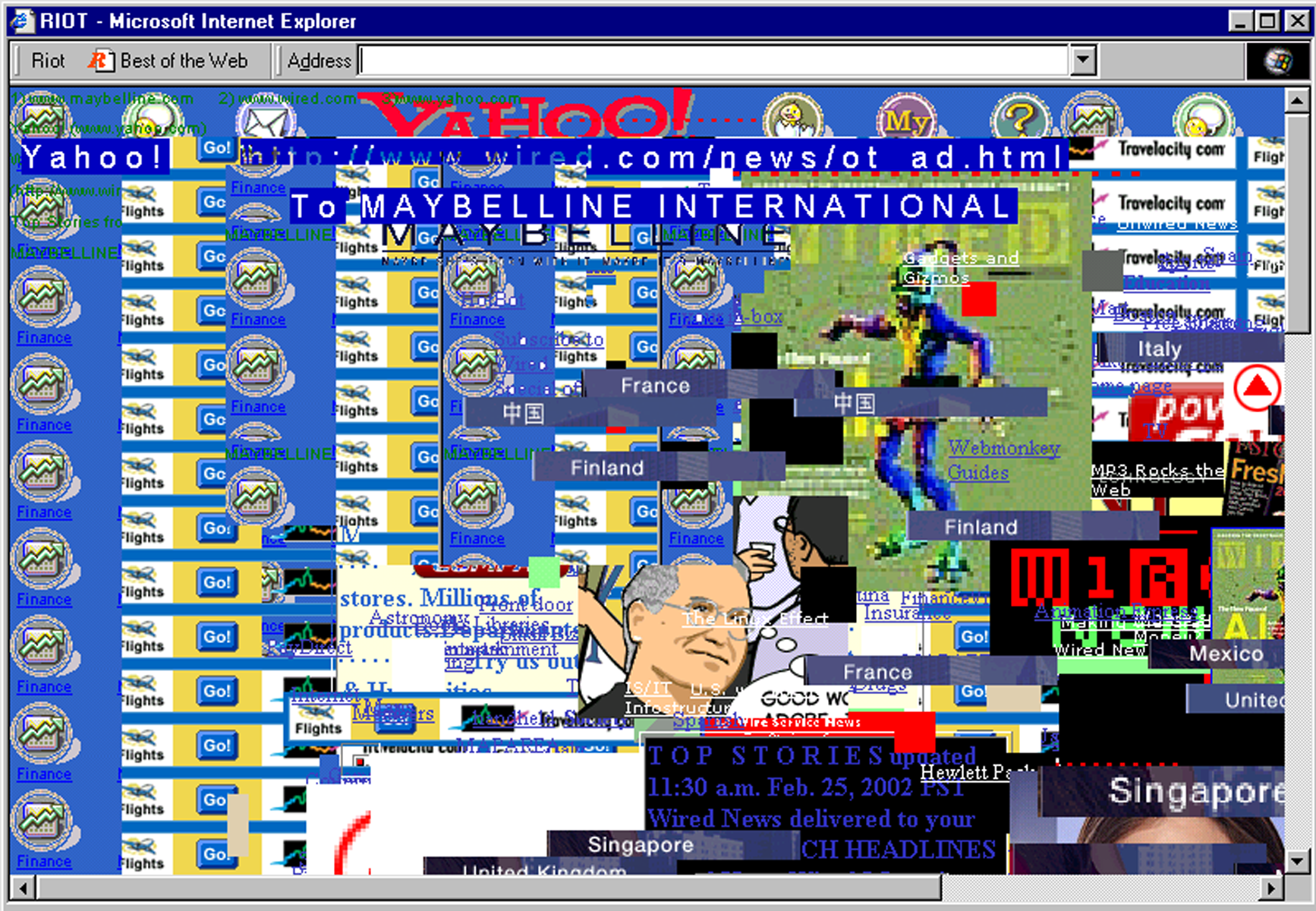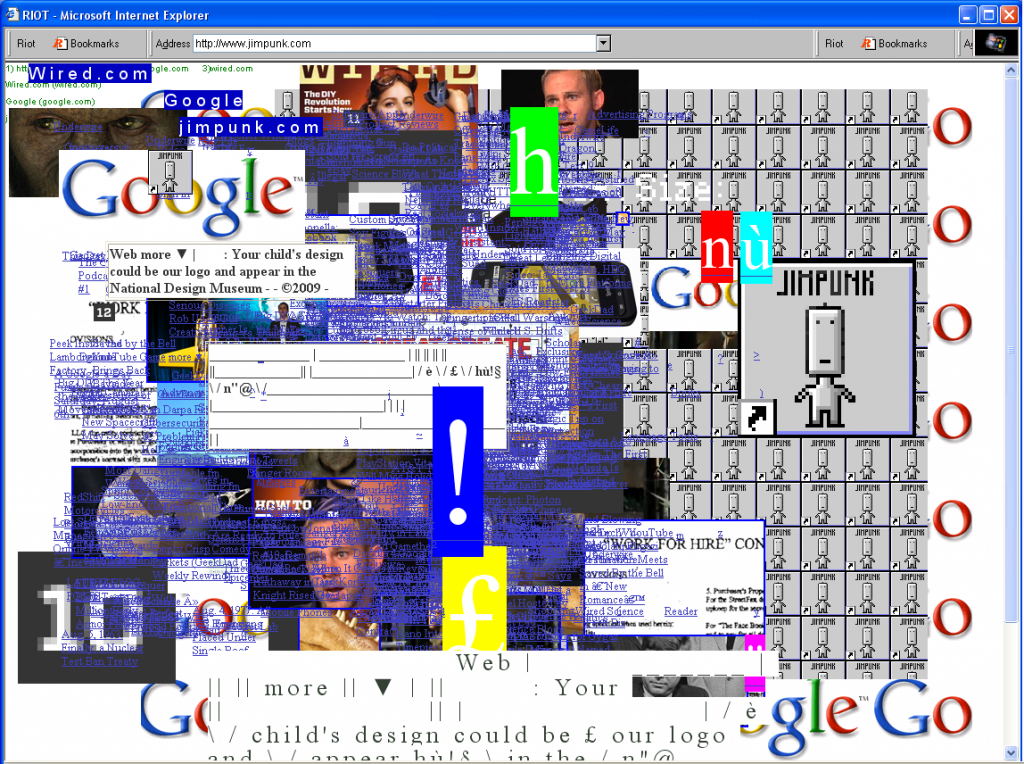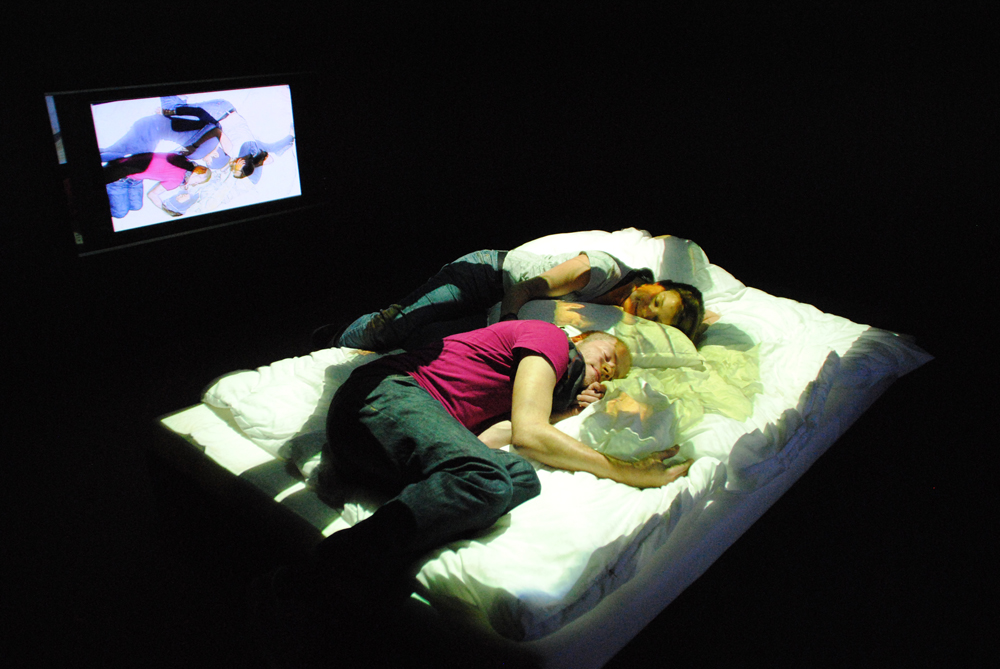Eiko and Koma, My Parents
This piece was created by their son, Shin Otake, serving as a documentary about his parents’ upbringing and forming of relationship in post-war Japan. That period was a time of political strife and disorder. A prime featured piece in the film was “Land”.
“Land” explored the interaction between the human body and nature by merging themselves into the environment through their washed and faded costume that mimicked sand. They depicted themselves as mountains in a desert.
Movement was very slow and careful, to create the illusion of stillness. They spread across the floor and slithered, all with gradual movements. In relation to the box, they were moving freely but at the same time it was very controlled in the space and slow, which shows the rootedness of a mountain.The “box” is very spacious and the lighting, this gives a sense of depth like the vast sky.
They even used sound to emphasise the piece. The sound of a drum was used to highlight some points, for example heartbeat of the mountain and the birth of a new mountain.
Motion Control
This piece explored the synergy between the camera and performer. It challenged how the relationship between the Motion Control camera and the dancer, camera and sound, camera and space can be pushed further.
The movement of dancer was very emotional and expressive. In the small “box”, a sense of entrapment seemed to be created with her movements that “filled” the box entirely. In the spacious white box, her movements from her upper body were big. Her big movements made the box seem smaller than it is, with her energy being projected widely. This contrasted with lower body, seemingly showing constrained movement due to the dress rooted to the ground.
Sound was very significant in this piece as well, the usage of foley was apparent. Electro-opera was used for dramatising the dance piece. Sound effects were linked very well with the movements to emphasise them, for example the sound of a CD scratch when the dancer moves her leg. Another example would be the sound of the red dress squeaking as she dances.
